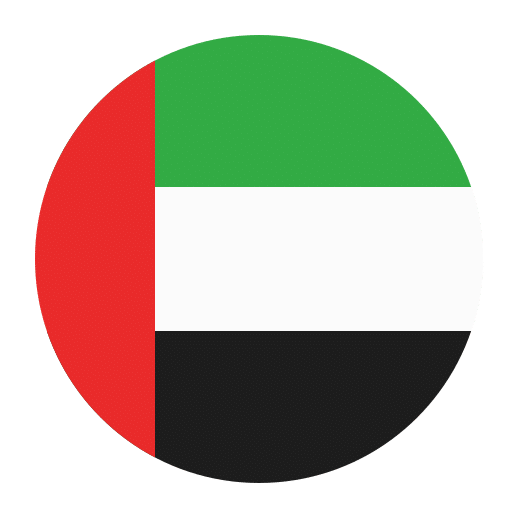Learning a new language is always an exciting journey, and when it comes to Arabic, a language rich with history and culture, the experience can be even more rewarding. One of the fundamental steps in acquiring a new language is learning the vocabulary related to body parts. This knowledge is not only essential for everyday conversations but also provides a deeper understanding of the cultural nuances and expressions unique to Arabic. In this article, we will explore the Arabic terms for various body parts, providing English speakers with a comprehensive guide to enhance their language learning experience.
Head and Face
The head and face are often the first areas people learn about when studying body parts in any language. Here are the key Arabic terms for these parts:
1. **Head** – رأس (ra’s)
2. **Hair** – شعر (sha’ar)
3. **Forehead** – جبين (jabeen)
4. **Eye** – عين (ayn) – Plural: عيون (uyoon)
5. **Eyebrow** – حاجب (hajib) – Plural: حواجب (hawajib)
6. **Nose** – أنف (anf)
7. **Mouth** – فم (fum)
8. **Lip** – شفة (shafa) – Plural: شفاه (shafah)
9. **Ear** – أذن (udhun) – Plural: آذان (adhan)
10. **Cheek** – خد (khad) – Plural: خدود (khudud)
11. **Chin** – ذقن (dhaqan)
12. **Neck** – رقبة (raqabah)
These words form the basics of your vocabulary related to the head and face. When practicing, try to use them in simple sentences to get comfortable with their pronunciation and context.
Example Sentences
– I have blue eyes.
– عندي عيون زرقاء. (indi uyoon zarqa)
– She has long hair.
– لديها شعر طويل. (ladiha sha’ar taweel)
– His nose is small.
– أنفه صغير. (anfuhu sagheer)
Upper Body
Moving down from the head, the upper body includes many essential parts that are frequently mentioned in daily conversations. Here are the Arabic terms for these parts:
1. **Shoulder** – كتف (kataf) – Plural: أكتاف (aktaaf)
2. **Arm** – ذراع (dhiraa’)
3. **Elbow** – مرفق (mirfaq)
4. **Hand** – يد (yad) – Plural: أيدي (aydi)
5. **Finger** – إصبع (isba’) – Plural: أصابع (asaabi’)
6. **Thumb** – إبهام (ibhaam)
7. **Chest** – صدر (sadr)
8. **Back** – ظهر (dahr)
9. **Waist** – خصر (khasr)
10. **Stomach** – بطن (batn)
These terms will help you describe different actions and body parts that are often in use. For instance, if you’re talking about sports, activities, or even health, these words will come in handy.
Example Sentences
– My shoulder hurts.
– كتفي يؤلمني. (katifi yu’limuni)
– He broke his arm.
– كسر ذراعه. (kasara dhira’ahu)
– She has a tattoo on her back.
– لديها وشم على ظهرها. (ladiha washm ‘ala dhahriha)
Lower Body
The lower body includes some of the largest and most important parts of the human anatomy. Here are the Arabic terms for these parts:
1. **Leg** – ساق (saq) – Plural: سيقان (siqaan)
2. **Knee** – ركبة (rukbah)
3. **Ankle** – كاحل (kaahil)
4. **Foot** – قدم (qadam) – Plural: أقدام (aqdam)
5. **Toe** – إصبع القدم (isba’ al-qadam) – Plural: أصابع القدم (asaabi’ al-qadam)
6. **Heel** – كعب (ka’b)
7. **Thigh** – فخذ (fakhidh) – Plural: أفخاذ (afkhadh)
8. **Hip** – ورك (wark) – Plural: أوراك (awraak)
9. **Calf** – ساق الساق (saq al-saq)
These words will be particularly useful when discussing activities that involve movement, such as sports, dancing, or even daily chores.
Example Sentences
– My knee is swollen.
– ركبتي منتفخة. (rukbati muntafikha)
– He twisted his ankle.
– التوى كاحله. (iltawa kaahiluhu)
– She has strong legs.
– لديها سيقان قوية. (ladiha siqaan qawiya)
Internal Organs
Knowing the names of internal organs can be particularly useful, especially in contexts related to health, medicine, or biology. Here are the Arabic terms for some of the most important internal organs:
1. **Heart** – قلب (qalb)
2. **Lung** – رئة (ri’a) – Plural: رئات (ri’aat)
3. **Liver** – كبد (kabid)
4. **Kidney** – كلية (kulyah) – Plural: كلى (kulaa)
5. **Stomach (internal)** – معدة (mi’dah)
6. **Intestine** – أمعاء (am’a)
7. **Brain** – دماغ (dimaagh)
8. **Bladder** – مثانة (mathanah)
9. **Pancreas** – بنكرياس (bankiriyas)
10. **Spleen** – طحال (tihaal)
Understanding these terms can be beneficial, especially if you find yourself needing to explain symptoms to a healthcare provider or simply want to understand more about human anatomy in Arabic.
Example Sentences
– His heart is healthy.
– قلبه صحي. (qalbuhu sihhi)
– She donated a kidney.
– تب

